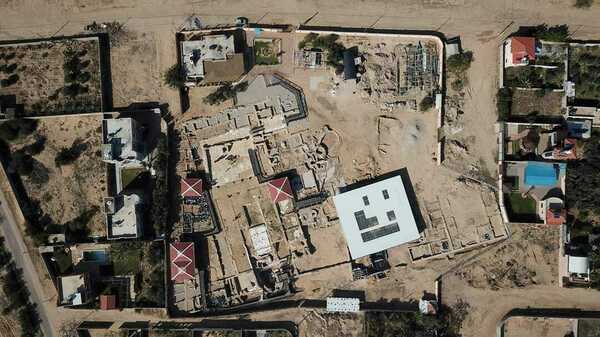
The historic site of Tell Umm Amer in Gaza has been officially added to the UNESCO World Heritage List. This inclusion follows an emergency nomination. The announcement was made during the World Heritage Committee's current session in New Delhi, which concluded on Wednesday.
This designation not only highlights the site's historical and cultural significance but also grants it immediate access to emergency funding and technical support from UNESCO for preservation efforts.
Situated south of Gaza City, Tell Umm Amer dates back to the fourth century and features the remains of the monastery of Saint Hilarion. The site includes two churches, a burial area, a baptismal hall, a public cemetery, an audience hall, and dining facilities.
In its 2012 application to UNESCO's World Heritage Tentative List—an inventory of sites considered for inclusion—the Permanent Delegation of Palestine to UNESCO emphasized Tell Umm Amer’s importance in the early history of Christianity in Palestine.
“The monastery of Saint Hilarion is a unique site due to its exceptional architectural elements and its significant historical, religious, and cultural value. It was a key location at the crossroads of Egypt, Palestine, Syria, and Mesopotamia,” the application noted.
The site is notably linked to the growth of monastic desert centers in Palestine during the Byzantine period. Saint Hilarion’s monastery may have served as a hub for missionary activity in the Gaza region, positioned at a critical crossroads despite its seemingly isolated desert location.
Since the outbreak of the Israel-Gaza conflict, over 200 of Palestine’s historical and archaeological sites have been damaged or destroyed, according to a statement from the Palestinian Ministry of Culture. This includes the 1,400-year-old Al Omari Mosque, Gaza’s oldest, which suffered significant damage during an Israeli military offensive, and the Hamam Al Sumara, Gaza’s last functioning bathhouse dating back to 1320.
Palestine now has four sites on the World Heritage List: the Church of the Nativity in Bethlehem, completed in 339; the village of Battir, known for its ancient olive groves and vineyards; and Tell es-Sultan (Ancient Jericho), which features archaeological deposits from as far back as 10,500 BC.
In addition to Gaza’s Tell Umm Amer, the World Heritage Committee is reviewing three other sites from a list of 28. These include Umm Al Jimal in Jordan, a city with Nabataean origins; the Al Faw archaeological area in Saudi Arabia, a once-thriving city from the fourth century BC to the fourth century AD; and Hegmataneh in Iran, one of the country's oldest inhabited cities with a history reaching back to the first millennium BC.